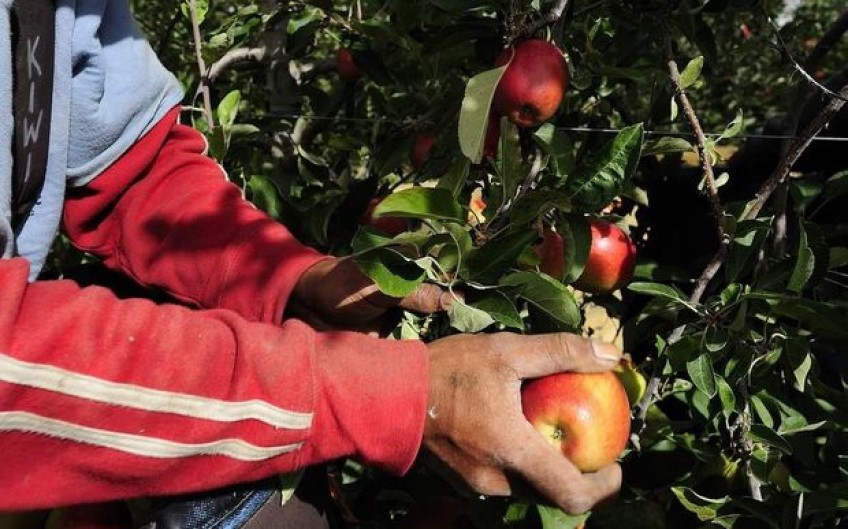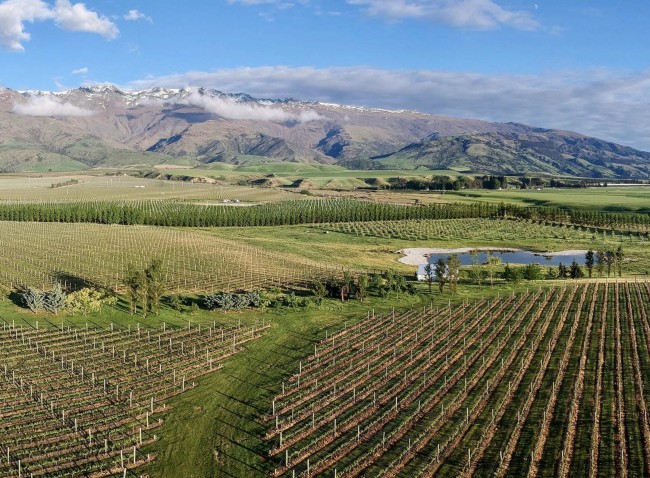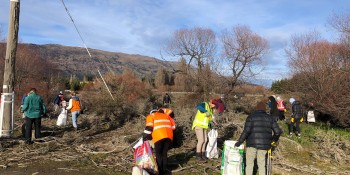
Central fruit waste too high - CODC report
Central Otago is known for its fruit but too much of it misses being served up to consumers both here and overseas, and that’s a missed opportunity for the industry.
For every 100 pieces of fruit grown in the district, 15 never leave the orchard.
It’s a finding from the Understanding fruit loss in Central Otago report, just released by the Central Otago District Council.
It was commissioned to determine how much fruit goes to waste, and it’s the first step towards supporting initiatives to make the most of every fruit grown in the district.
The report only focuses on fruit lost on orchards – non-harvested fruit left on trees, and fruit lost during harvest or in the packhouse – it doesn’t account for fruit that may be dumped later on in the distribution chain, by retailers or consumers.

For every 100 pieces of fruit grown in Central Otago, 15 never leave the orchard (Photo RNZ).
Central Otago District Council Economic Development Manager Nick Lanham says there is very little research on fruit loss in New Zealand, and nothing published for the local horticulture sector.
Globally, the food and Agriculture Organisation estimates one-third of food produced for humans does not end up being eaten.
“Doing this research to understand our current situation seemed like a very good place to start,” Mr Lanham says.
“The report shows that a high proportion – 85percent - of fruit grown in Central Otago does leave the orchards for human consumption, which is great to see. The question is – can the 15 percent loss be reduced?”
The report findings are being presented via an online forum to industry movers and shakers today, and next steps will be discussed.
It’s a good time to investigate options to support growers to reduce fruit loss – there’s increasing food and horticulture innovations, and consumer awareness around waste is increasing, Mr Lanham says.
“Not only does reducing fruit loss mean resources are being used most efficiently but it could also support further development of value-added processing options, better growing techniques or new markets.
“These would all increase the industry’s resilience to weather events or market changes.”
Local company Thrive Consulting, which specialises in horticulture consultancy services, conducted the research and authored the report for council.
The report’s data came from surveys and interviews with Central Otago horticulture growers and quantified fruit loss for apples, apricots, cherries, peaches and nectarines.
The report author says growers are open to new ideas and opportunities - There's strong interest from growers to collaborate and find alternatives for process and fruit loss, but some are unsure how to do this and their focus is on growing high-quality fruit for sale.

Cleo Gilmour of Lilo Desserts turns imperfect Central Otago cherries that would otherwise go to waste into award-winning desserts (Photo supplied).
Food entrepreneur Cleo Gilmour welcomes the research.
She’s been connecting with local orchardists with a plan to turn reject cherries into delicious desserts.
Along with three friends, Miss Gilmour began Lilo Desserts.
Earlier this year, the company’s plant-based cheesecake, made using cherries that would otherwise have been thrown out because of imperfections, won the start-up category at Foodstarter, New Zealand’s biggest food innovation competition
Taiwan and China are by far the largest export markets for New Zealand cherries – during Chinese New Year, demand is virtually insatiable.
But, having grown up in Otago, Miss Gilmour understands one extreme weather event can devastate an orchard’s harvest.
When growers rely heavily on selling quality primary produce, there’s plenty at stake.
Innovative, value-added products like the diary-free cheesecakes on offer by Lilo help mitigate risk for growers as well as lessen fruit waste, she says.
With a professional background in Chinese digital marketing, working with brands such as Pic’s, Education New Zealand and Mother Earth, Miss Gilmour says it’s no longer enough for a Kiwi product to rely on “being-from-New-Zealand” as its unique selling point offshore.
“Living in China, I saw so much innovation, I saw how fast food moves, and all the value-add opportunities.”
Some of the report's key findings include:
- Fruit not harvested was estimated at 8.6 percent (4151 tonnes) of the total crop.
- Fruit harvested that was not sold amounted to 4.2 percent (2014 tonnes) of the total harvested fruit crop. This fruit was mostly recycled back to the orchard.
- Export and local market fruit accounted for 85 percent of fruit sold and process grade fruit was 11 percent of harvested fruit. Process grade fruit was mostly used in juice, concentrates, drying and pulp.
- Most growers agreed that fruit loss will increase in the future driven by substantial new plantings and increasing grade standards.
- More growers are moving towards strip picking which will increase the harvested loss and reduce non-harvested loss.





























